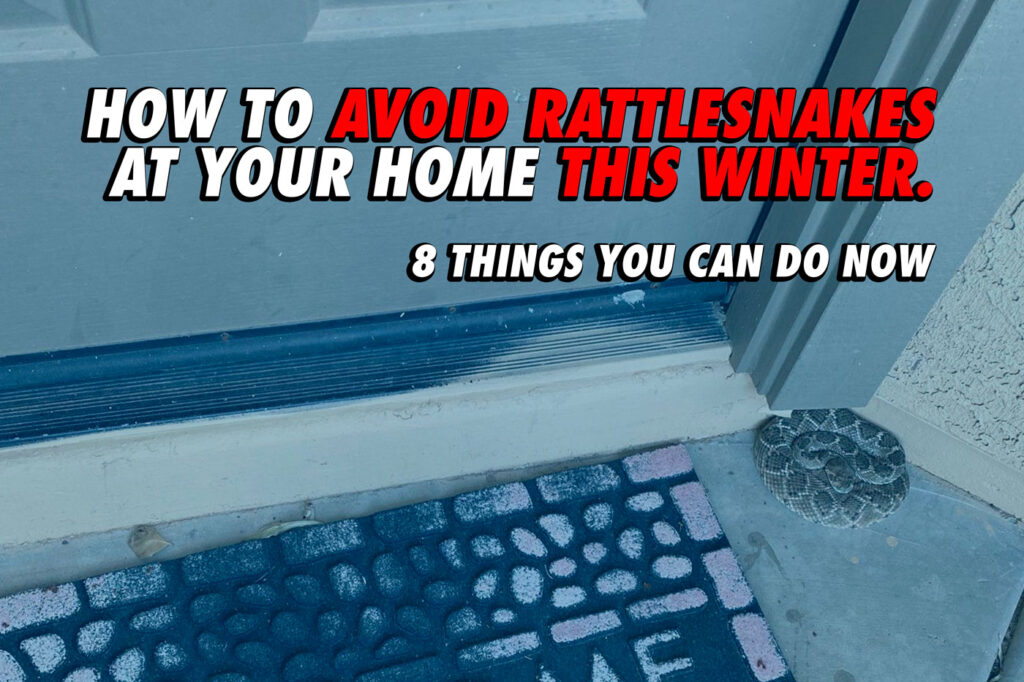
Summer has left us, and cooler temperatures are on the horizon. Yet, rattlesnakes are still incredibly active. In fact, the pre-hibernation flurry of activity means that encounters will be on the rise for a short amount of time.
In just a few short weeks, rattlesnakes need to eat and drink as much as they can, find mates, and travel long distances to their selected winter refuges. That can put them in conflict with people and pets, both on the trail and at home.
Here are some easy things you can do right now to get your property in shape so that any rattlesnakes that might be eyeballing your place as a winter den will keep on crawling.
1. Take care of that long-neglected landscaping project.
We all have one … that overgrown bush along the back wall that just never gets priority treatment, or that messy stack of agave that’s firmly on the “take care of that someday list”. Well, now’s the time! These may be opportunities for rattlesnakes to find the thermal protection they need to den for the winter.
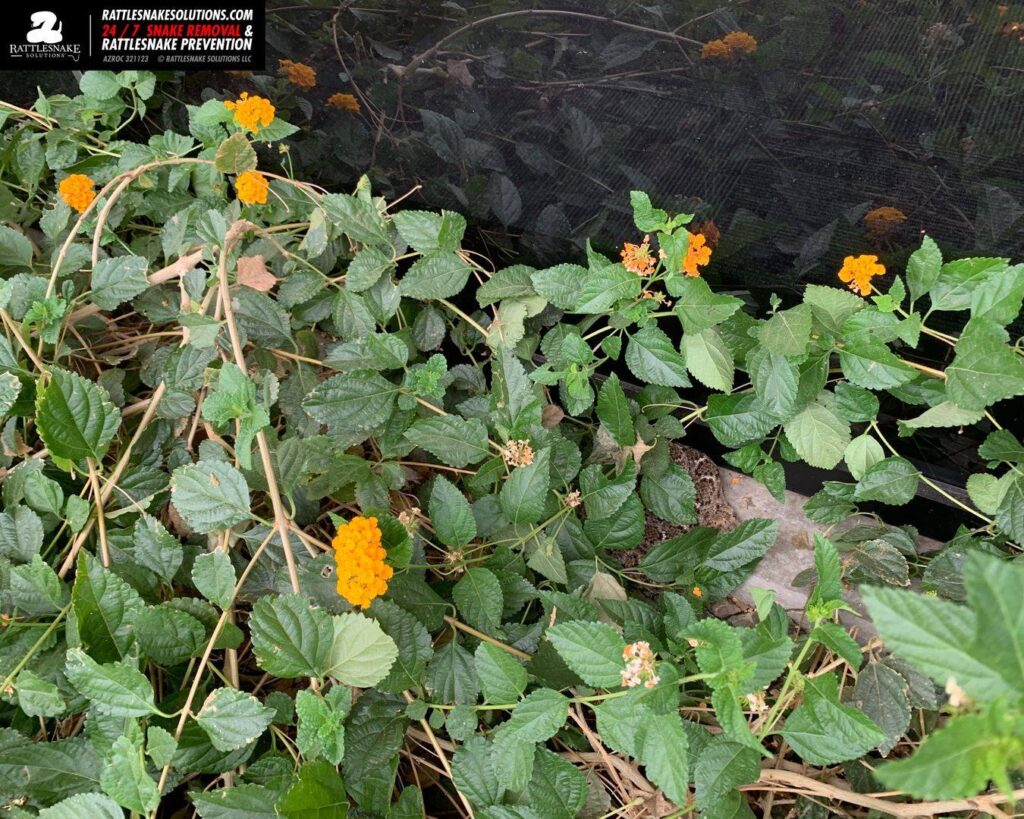
Over the years, we have removed hundreds of rattlesnakes from overgrown lantana, rosemary, and others. Any plants that tend to drop a lot of leaf-litter are suspect. That deep layer of organic material retains moisture and provides thermal protection.
Time for a yearly deep-maintenance landscaping check in. The rule of thumb: if you can see the ground under a ground-laying bush from above, it’s properly maintained.
2. Make any repairs to, and clean up, the pool equipment areas.
As we’ve mentioned many times, pool equipment is a favorite rattlesnake den for the winter. Concrete pads with rodents, combined with relatively high ambient moisture and a little vibration every time they turn on and off, means the formation of caves. These caves, even though they don’t look like much, can go deep, and be the perfect home for rattlesnakes and other animals.
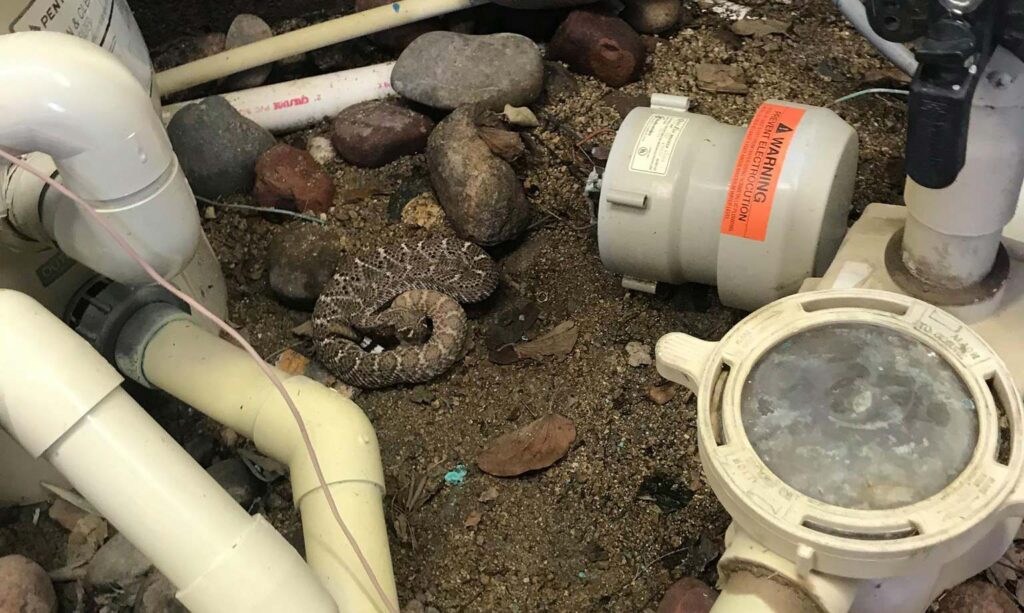
The back corner of the property, complete with the little wall that usually hides it, is made to forget. For that reason, it often doubles as a graveyard for deflated pool toys, pavers, and old buckets.
Spend a little time this Saturday filling in any holes you find with gravel, repairing any concrete you need to, and cleaning it out. If there are no tunnels, the area is useless for rattlesnakes.
3. Bulk pickup day!
If you’re like most of us, you have a stack of roofing tiles or pavers someone on the property. We stack them there to deal with later, maybe have them around just in case a tile breaks or … whatever. But let’s be honest with ourselves; it’s been years and we haven’t touched them.
Time to go! Especially if stored near a wall or against the foundation of the home, as they tend to be, rodents will use them. These situations where rodents create tunnels under a stack of bricks are absolutely perfect for rattlesnakes to use during the winter. Fortunately, it’s as easy to take care of as posting “free pavers! come and get em” on Facebook Marketplace.
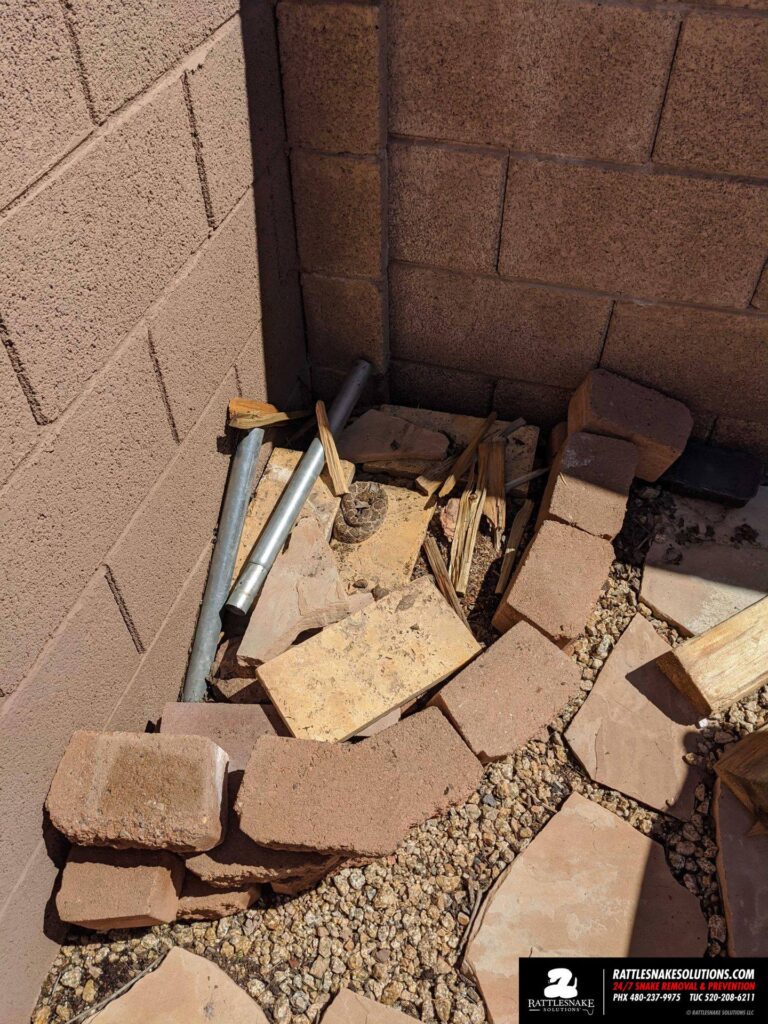
Any other debris, too, has to go. You’d be surprised to learn how many winter rattlesnakes we pull out of situations like debris from the previous-summers kitchen remodel, old pool toys and unused stuff of all kinds. If you need a little motivation to finally kick this stuff to the curb, here it is: RATTLESNAKES WILL LIVE IN YOUR YARD IF IT’S THERE. Feel free to use that with your spouse this Saturday. You’re welcome.
4. Get snake fencing installed already.
If you live in Arizona, snake fence installations are probably something you’re familiar with. It’s a physical barrier that is designed and installed in such a way that it keeps them out of an area. If done properly by a reputable company *cough cough*, you could make rattlesnake heaven in the backyard and they’d not be able to come in.
Unlike the other items on this list, this one isn’t free. However, it is the most effective way to go, and removes the subjectivity. While everything else will have a high likelihood to decrease the chances of seeing a rattlesnake, snake fencing all-out prevents it.
If getting a snake fence installed has been on your list for awhile, right now is the best time to do it. It’s also near the end of the season, so discounts may be available. Here’s a massive and detailed guide of what to look for in a snake fence provider to help you in your snake-free journey.

5. Seal up and clean out the garage.
If someone told you about a spacious, comfortable house … kept nice and warm (or cool), secure and safe, with free food … oh, and free … would you move in? Rattlesnakes say “YES”! The house we’re talking about is your garage. Every winter and early Spring, we get many calls for rattlesnakes who’ve found a comfy garage to spend the cool months.
That stack of boxes along the back wall? That’s cover. To you the garage may be highschool yearbook and christmas tree storage, to snakes it’s a furnished condo. If possible, find another spot for storage. Especially along the walls, rattlesnakes will take advantage of easy hiding spots.
If you are storing in your garage, use plastic boxes with lids so that rodents and snakes can’t use them, too. You can also get storage shelves (easy to buy and install from Amazon and other places) so that they’re up off the ground at least 5 or 6 inches. These actions help reduce the thermal protection that is attractive to snakes.
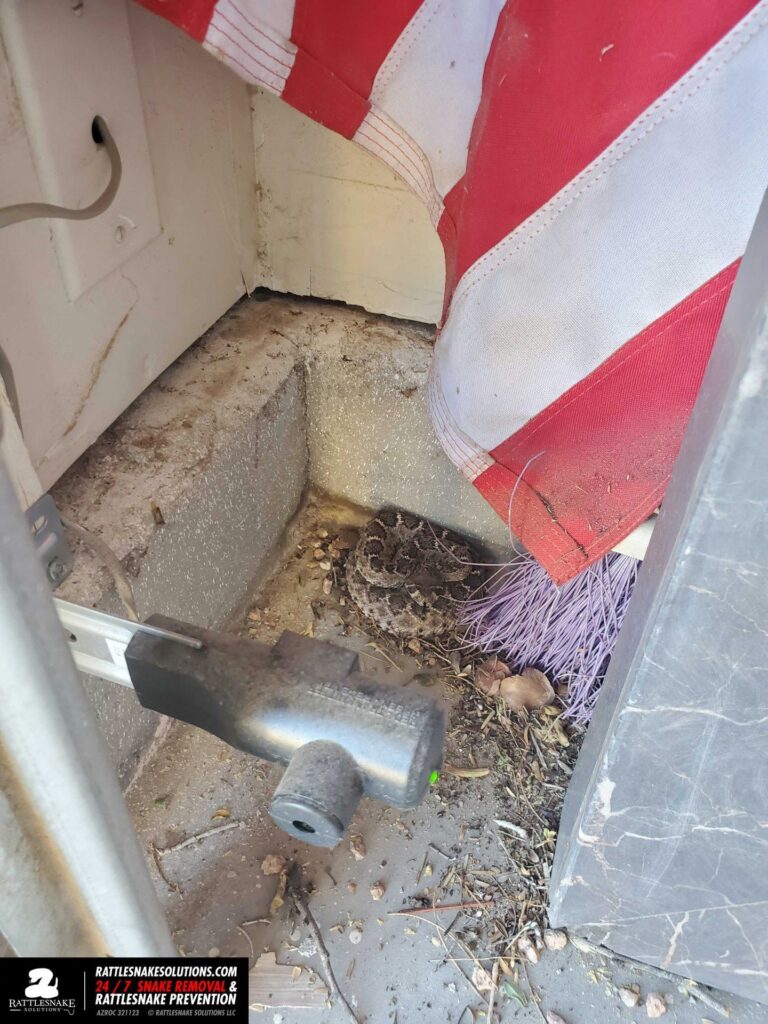
You should also seal it up! It doesn’t take long for hot weather and rodents to make short work of the rubber seal on the garage door. If your garage door doesn’t close to allow no greater than 1/4″ at any point, you should consider calling a garage door company out to get it replaced. They may have a seal option that is made to keep bugs out, which would work just fine for rattlesnakes as well.
6. Fix any cracks or openings in the foundation
Not only for homes, but external garages and sheds, too. If there’s access under the home, animals will find it and use it. Rattlesnakes certainly do, too. If you notice that there’s a way in or under the foundation of your home, don’t wait to get it fixed.
Walk the property perimeter (this only takes a few minutes) and identify any potential issues. If you want to fix them quickly, you can get something from Home Depot to quickly seal it up. Or, have a concrete repair company make the repairs … you’ll want to get on that quickly, though.
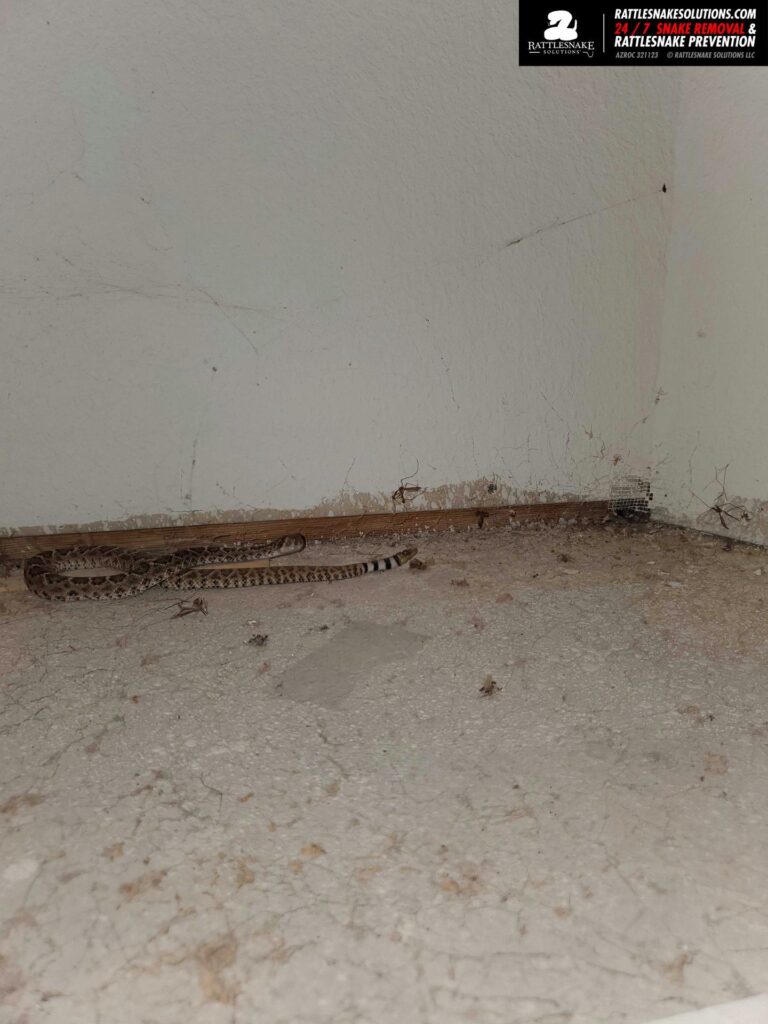
7. Attend to the wood pile!
It’s almost firewood season! Unfortunately, rattlesnakes are excited, too. The pile of debris at the side of your house that you haven’t touched since last year is a dream scenario for rodents and snakes alike. It’s basically a free log cabin.
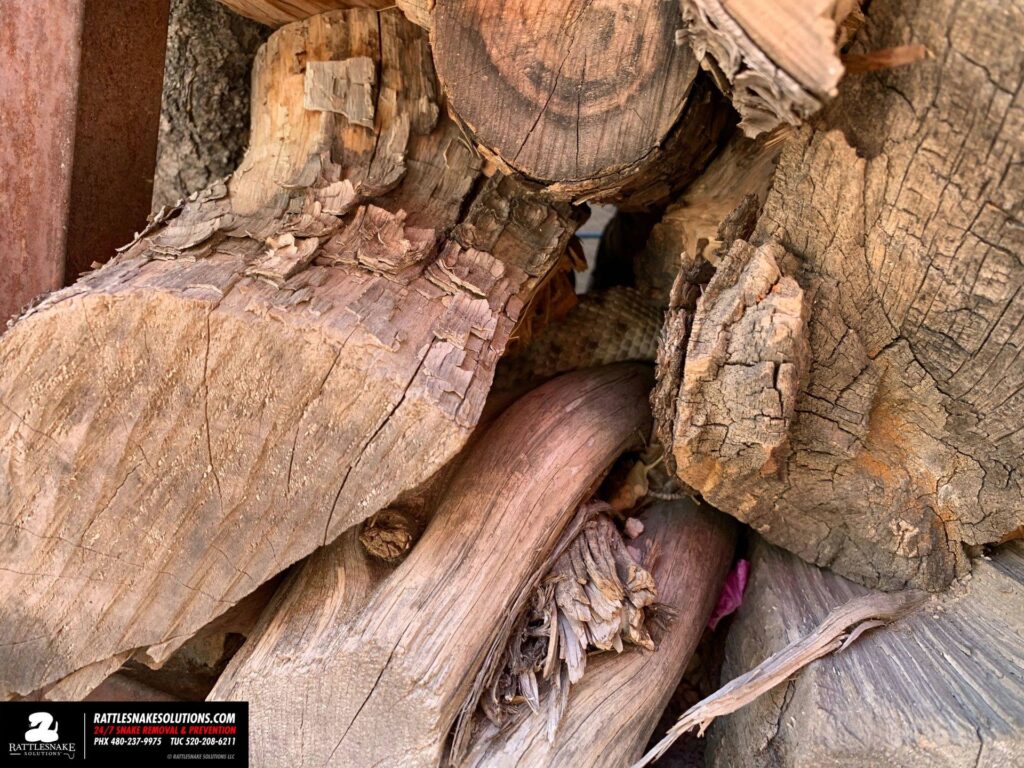
Fortunately, there are a couple of easy fixes here:
- Use a stand or lift to keep the firewood up off the ground at least 6 inches. This will eliminate much of the thermal protection and make it useless to snakes.
- Move the location of the woodpile each year. Even if it’s to the spot immediately next to it, it will help. When a woodpile has been in the same location for years, it invites rodents, often has tunnels under it, rotting material, and all the good stuff that they like.
8. Go deep! Go through the full checklist
The steps you take to keep rattlesnakes away from the yard are really not different than you’d do in other times of year, though the priority may shift to those potential den situations. If you want to do more, that’s always better. Review the Ultimate Guide to Keep Rattlesnakes Away and follow all instructions that apply.
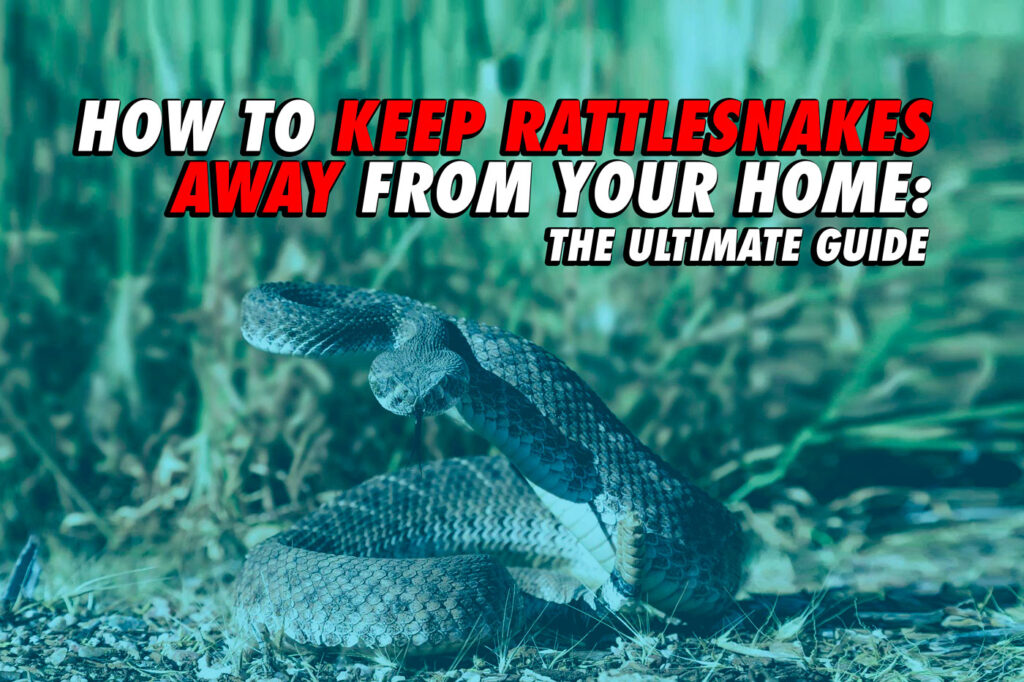
What to expect.
If you take care of these items, and have an overall perspective of keeping habitat opportunities to a minimum, you will likely never see a rattlesnake in the winter. The spots that they choose are very specific, allowing them to survive and wait for Spring. If none of these spots are offered, your yard is simply not useful.
Usually, based on call volume to our snake relocation hotline and surveys, rattlesnakes are more or less where they intend to be for the Winter by the second week of November. That means that October will be busy. You can expect the most activity to occur in the late afternoon until about 1 hour after sunset. It’s important to keep your garage doors closed during this time, even as weather finally becomes more reasonable.
If you’re a seasonal resident, be sure to check out our Snowbird’s Guide to Rattlesnakes.
